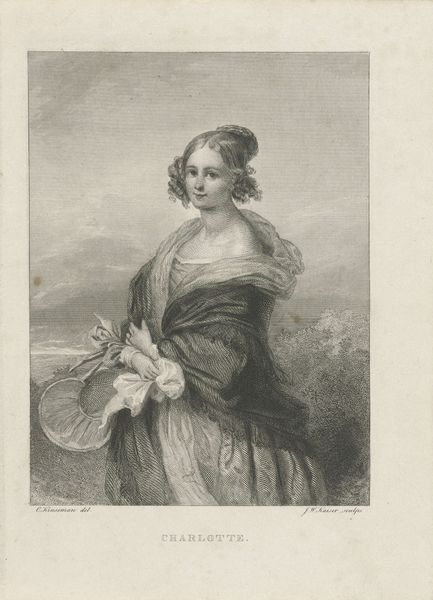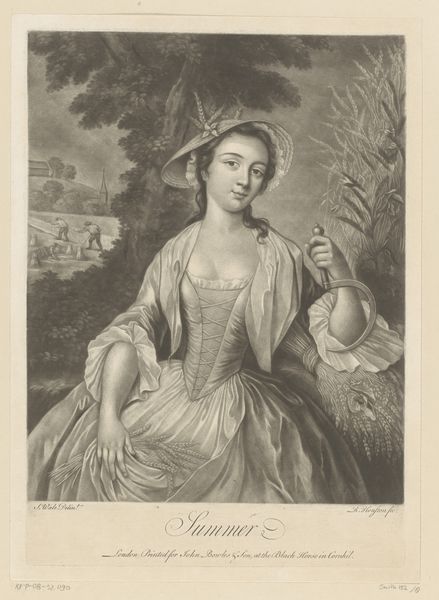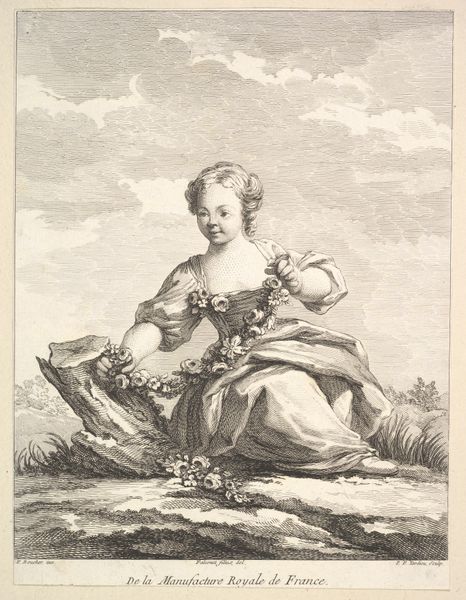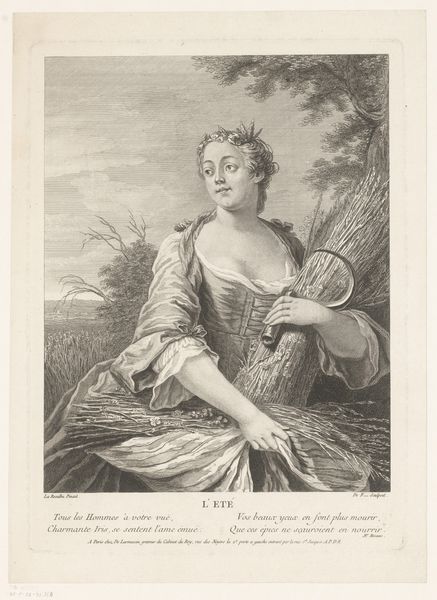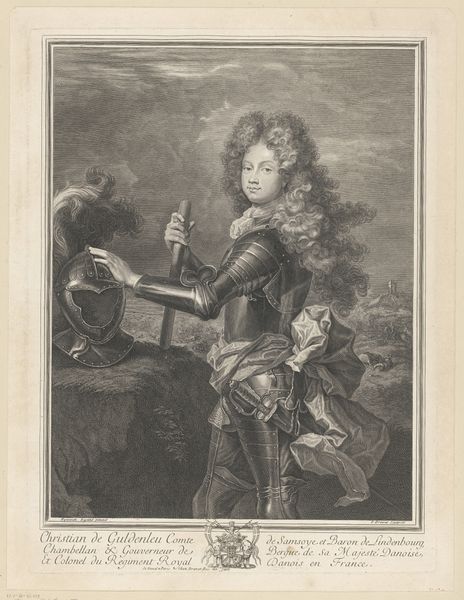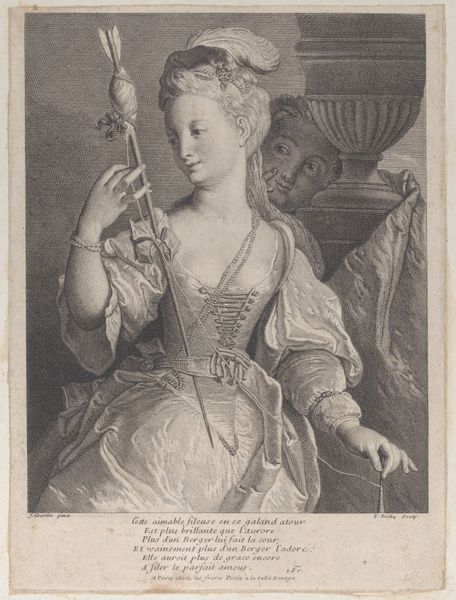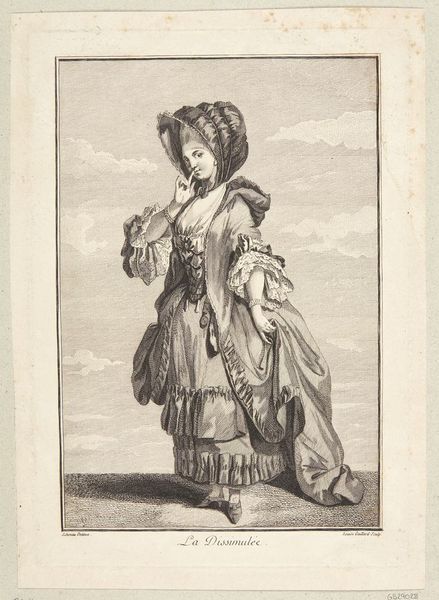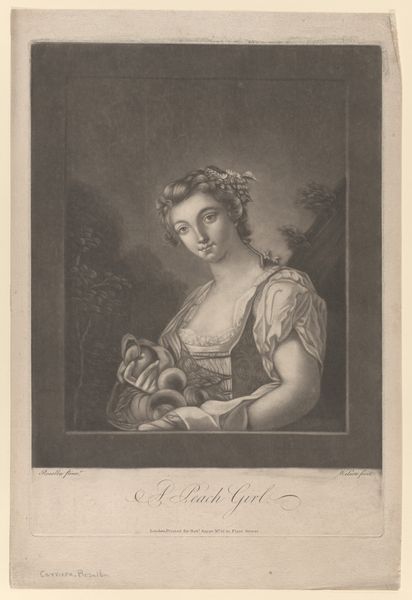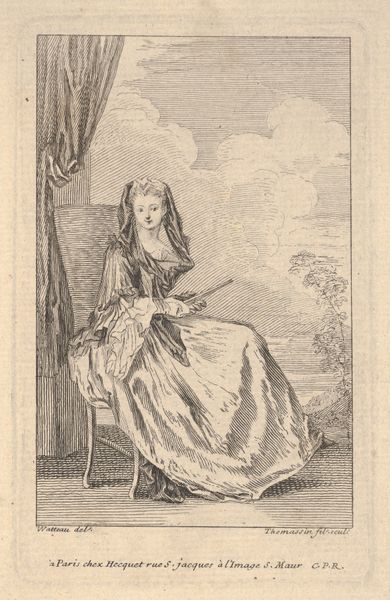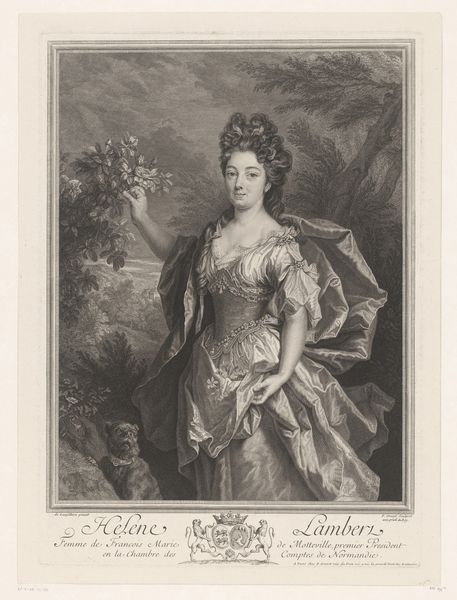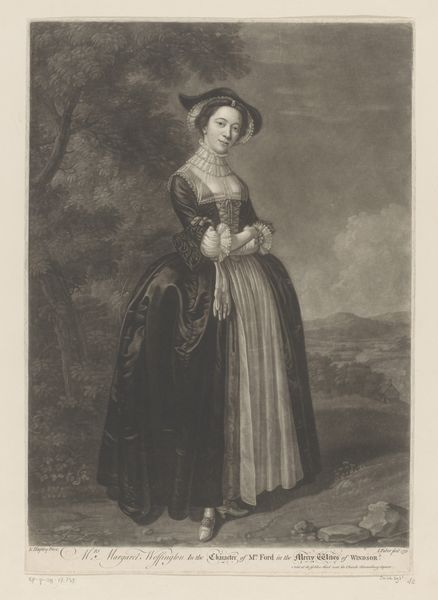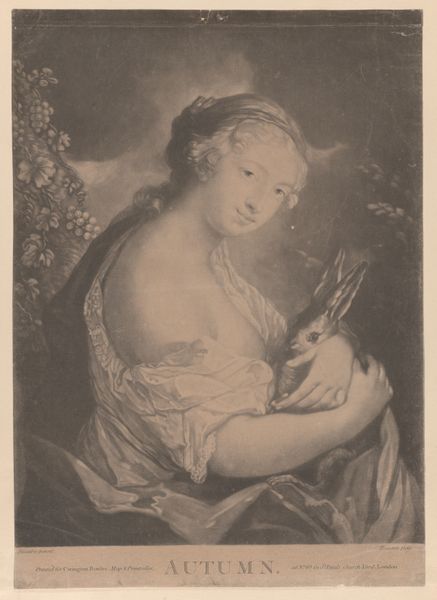
drawing, print, engraving
#
portrait
#
drawing
# print
#
men
#
portrait drawing
#
engraving
#
rococo
Dimensions: Sheet: 10 9/16 in. × 8 in. (26.9 × 20.3 cm)
Copyright: Public Domain
Curator: "Amusement Espagnol," engraved by Pierre François Basan, probably sometime between 1723 and 1797. It’s currently held in the collection of the Metropolitan Museum of Art. Editor: My initial impression is a Rococo daydream – delicate lines, a lady with a lute, lost in a hazy garden. There’s something very performative about her posture, isn’t there? Curator: Indeed. Consider the etching process itself, the materials, the engraver meticulously translating the painting through labor-intensive techniques. This print would have been widely disseminated. Copies upon copies meant it was consumed as both art and decor, potentially losing its auratic significance, don’t you think? Editor: Absolutely, it highlights the democratization of art during the period. While technically skilled, it becomes less about artistic genius and more about mass reproduction and consumption. Looking at the subject, her extravagant attire, and the title itself, "Spanish Amusement," it seems to evoke the exotic and the playful – but probably filtered through a very French, aristocratic lens. What social messages might this image reinforce? Curator: The etching embodies consumer culture. It isn’t just an aesthetic object; it's also merchandise that facilitated access to this imagined world and disseminated these ideologies. Think about the etcher himself. He translated Allou’s vision. In many respects, that's another form of labor. Editor: Right. The very act of depicting the leisure activities of the elite implicitly contrasts it with the labor required to create the artwork itself. The woman’s gaze is ambiguous. Is she performing for herself or an unseen observer? The staging, the lighting – it all feels intentionally crafted, designed to convey a specific social standing and cultural capital. Curator: It seems we are considering the economics and materiality in concert with cultural projection. These are often intrinsically linked; for that matter, access, reproduction, distribution and ownership create more channels through which ideological frameworks exist. Editor: Precisely. I leave pondering on the work involved. It reminds us that representations, no matter how ethereal, always emerge from very material conditions, shaped by economic forces and cultural desires. Curator: A perfect lens to reassess artistic significance and labor behind its production. A material exploration enriches contextual dialogue.
Comments
No comments
Be the first to comment and join the conversation on the ultimate creative platform.
